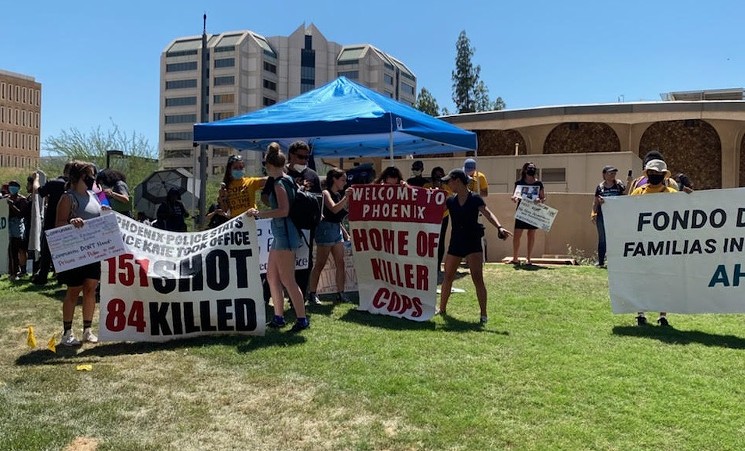Latinos and the Cops

One of the biggest problems we face in our national conversation about race has been front and center of late. It’s that we speak of it as almost an exclusively black-white relationship, which is a slight problem since the nation’s largest minority group is Latino. Now I know that this group consists of everyone from Ted Cruz to recent undocumented immigrants from Mayan communities in Guatemala to Afro-Dominicans. But still, it is by and large a distinct group. In the Southwest, made up very heavily of Mexican and Central Americans, that’s very true. Yet even in Black Lives Matter protests, there’s almost no way to talk about Latino lives too without seeming to undercut the power of the Black message. With so many Latinos coming out in support of the Black Lives Matter, they’d like their own issues acknowledged too.
Tu lucha es mi lucha,” several signs declared at a recent Black Lives Matter protest near the Arizona State Capitol. Your struggle is my struggle. The sea of faces included young Latinos who had marched before, during the immigrant rights movement in the state a decade ago, when Joe Arpaio championed draconian policies as the sheriff of Maricopa County. There was no doubt in these protesters’ minds: Their fights against racism are bound up together.
“Black and brown” has been a catchphrase in Democratic politics and progressive activist circles for years, envisioning the two minority groups as a coalition with both electoral power and an array of shared concerns about pay equity, criminal justice, access to health care and other issues. The ongoing protests about police violence and systemic racism encompass both communities as well — but the national focus has chiefly been about the impact on Black Americans and the ways white Americans are responding to it.
Many liberal Latino voters and activists, in turn, are trying to figure out where they fit in the national conversation about racial and ethnic discrimination. They have specific problems and histories that can be obscured by the broad “Black and brown” framework or overshadowed by the injustices facing Black Americans. For some, there is also a history of anti-Black racism in their own community to contend with, and a lack of inclusion of Afro-Latinos, who make up 25 percent of Latinos in the United States.
And while Latinos want people to understand how systemic racism in education, housing and wealth affects them, they are also grappling with an entrenched assumption that racism is a black-and-white issue, which can make it challenging to gain a foothold in the national conversation.
I mean, ICE is picking up undocumented immigrants at BLM protests! Latinos have been fighting against police brutality for years. We need to integrate the concerns of our various underprivileged groups both together and separately while also not denying the concerns of individual groups or submit to lame diversity narratives that exist primarily to make white liberals feel good about themselves. It’s not easy and I don’t really have all the answers, but race in America is not just Black and white and it’s not even primarily Black and white today. That’s a reality a lot of people need to adjust to.


